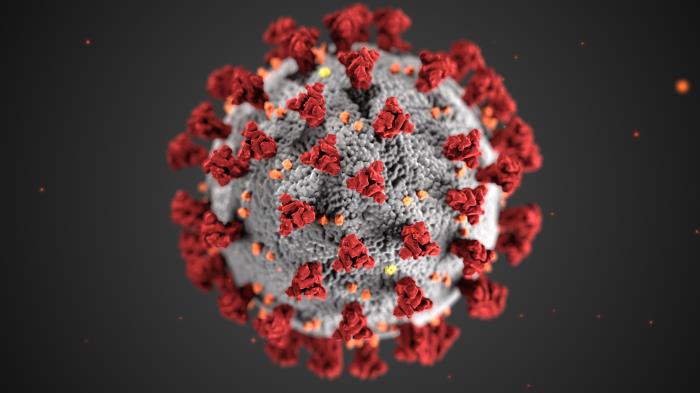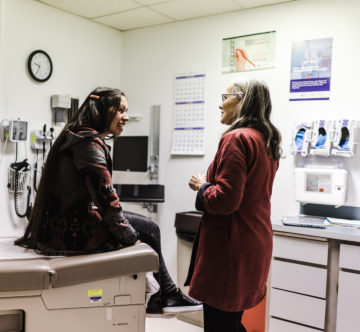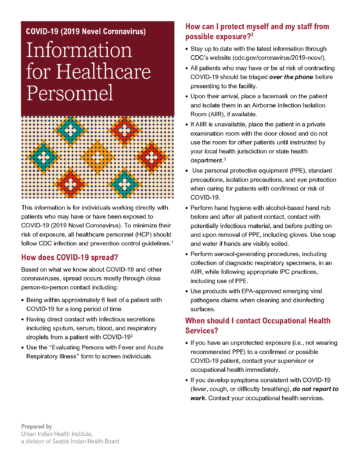Contents
As agencies serving Native people, it is vital to prepare for a COVID-19 outbreak. We encourage you to explore harm reduction strategies to reduce COVID-19 risk for your clients.
What is COVID-19?
COVID-19 (2019 Novel Coronavirus) is a viral respiratory illness caused by a coronavirus that has not been found in people before. It can lead to lower respiratory illnesses like pneumonia and bronchitis.1
How is COVID-19 spread?
- Through respiratory droplets of infected individuals from coughing, sneezing, etc.
- Close contact with an infected person (within 6 feet)
- Possibly through contact with infected surfaces or objects then touching your mouth, nose, or eyes1
What are the symptoms of COVID-19?
- Fever, cough, and shortness of breath
Symptoms may appear 2–14 days after exposure.1
How can our agency prepare for COVID-19?
- Establish communication with your local health department to stay informed about COVID-19.
- Know how and where to report and refer potential cases for testing; identify COVID-19 testing locations.
- Establish, review, and update your emergency plan.
- Collect sanitation supplies as available—masks, alcohol-based sanitizer, cleaning supplies, linens.
- Identify isolation spaces for sick individuals.
- Be aware of school/business closures—they may impact staff, volunteers, and clients.2,3
How can our agency help prevent cases of COVID-19?
- When possible, high-risk staff should work from home.
- Staff/volunteers with respiratory symptoms should not come to the facility.
- Limit visitors and face-to-face interactions.
- Frequently clean and disinfect all common areas.
- Keep beds/mats at least 3-6 feet apart and sleep head-to-toe.
- Screen clients at entry for respiratory symptoms and fever.
- Provide soap and water and hand sanitizer throughout the facility and encourage frequent hand washing.2,3
What if a client has symptoms?
- If a client is experiencing fever, cough, and/or shortness of breath, give them a facemask and isolate in a private room if possible.
- Achieving isolation in a facility may be difficult,
but decreases the risk to everyone.
- Achieving isolation in a facility may be difficult,
- Follow local public health guidance to obtain testing for potential COVID-19 cases.
- If client has severe symptoms (extreme difficulty breathing, bluish lips or face, etc.), call 911 and notify your public health department.
- Limit number of staff entering and exiting the room and document staff who have contact with sick clients.
- Staff should wear facemasks, gloves, gowns, and eye protection when engaging sick clients and wash hands thoroughly before and afterwards.
- Sick clients should be encouraged not to interact with pets. If they do, encourage harm reduction strategies such as, frequent handwashing and not sleeping with pets.2,3
How can our agency help manage client and staff stress?
Sustained effort during an outbreak can lead to stress and burnout.
- Watch for changes in behavior and substance use, loss of appetite, anxiety, depression, and other changes in mental status among staff and clients.
- Try to get adequate sleep, healthy food, and exercise. Stress can impact the immune response.
- Consider utilizing Indigenous cultural methods such as, prayer, singing, and plant medicines in managing stress and providing holistic care.
- Anticipate the needs of people during and after quarantine or isolation. Both can lead to potential stigma, fear/worry over health status, and sadness or anger.4
What do we do after the outbreak is declared over?
- Staff, volunteers, and clients are all likely to be physically, emotionally, mentally, and spiritually exhausted.
- Deaths may have occurred among clients, staff, or volunteers. Allow time for grieving.
- Talk with clients and staff to evaluate your plan of action and determine what was effective and what emerged as problems.
- Continue practicing everyday preventive actions (washing hands, cleaning surfaces, etc.).
- Maintain and expand emergency planning and lines of communication for future outbreaks.2,3
National Resources
- Centers for Disease Control and Prevention Interim guidance for homeless service providers to plan and respond to coronavirus disease 2019 (COVID-19)
- CDC Mental health and coping during COVID-19
- SAMHSA’s Disaster Distress Helpline
Toll-Free: 1-800-985-5990 (English and Español)
SMS: Text TalkWithUs to 66746
SMS (Español): “Hablanos” al 66746 TTY: 1-800-846-8517 - National Suicide Prevention Lifeline
Toll-Free: 1-800-273-TALK (1-800-273-8255)
Toll-Free (Español): 1-888-628-9454
TTY: 1-800-799-4TTY (1-800-799-4889)
References
- Centers for Disease Control and Prevention (2020). About COVID-19. https://www.cdc.gov/coronavirus/2019-ncov/about/index.html.
- 2007/2008 APIC Emergency Preparedness Committee (2008). Infection Prevention and Control for Shelters During Disasters. Association for Professionals in Infection Control & Epidemiology, Inc.
- CDC (2020). Interim guidance for homeless service providers to plan and respond to coronavirus disease 2019 (COVID-19): https://www.cdc.gov/coronavirus/2019-ncov/community/homeless-shelters/plan-prepare-respond.html
- CDC (2020). Mental health and coping during COVID-19. https://www.cdc.gov/coronavirus/2019-ncov/about/coping.html



